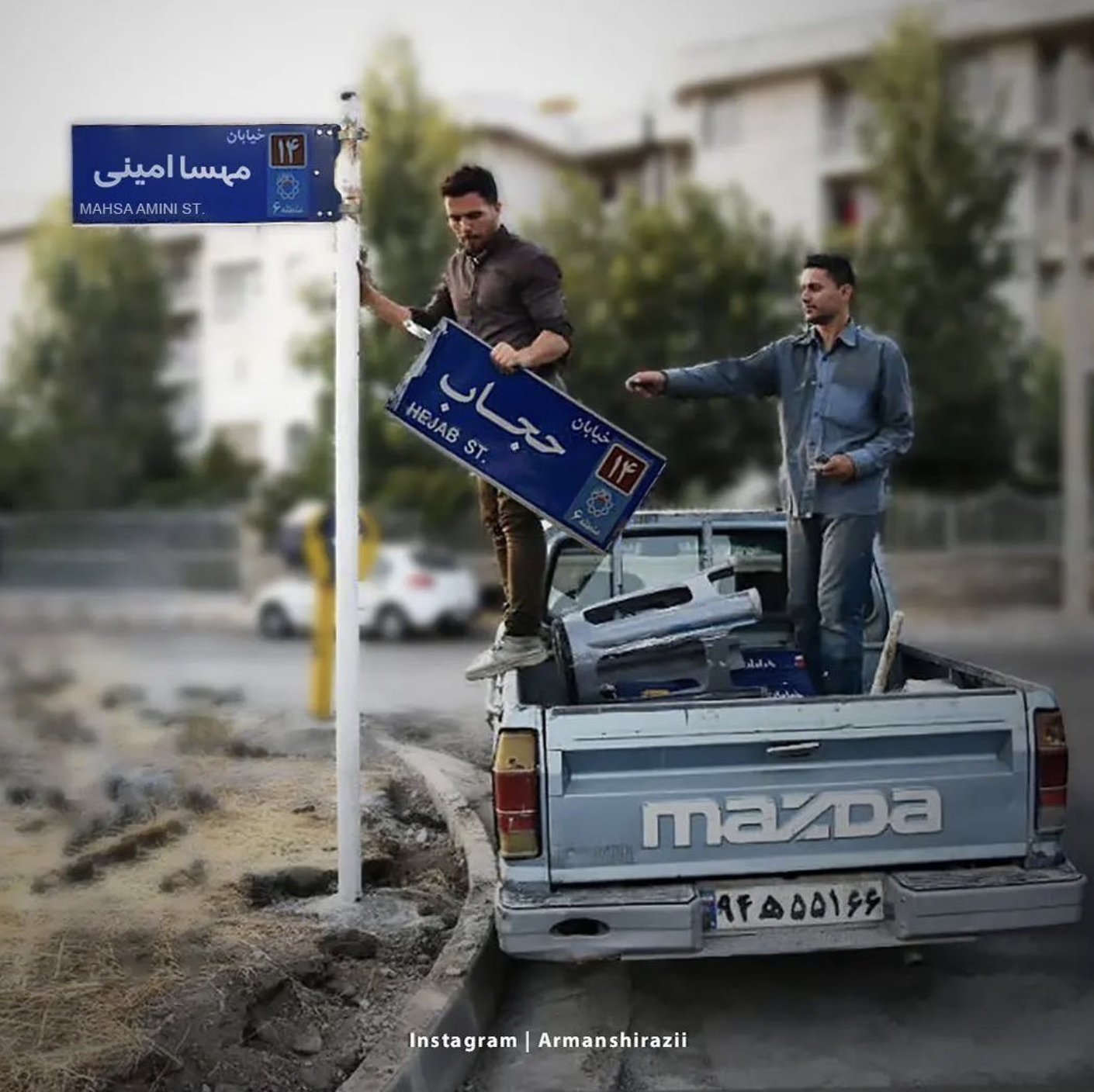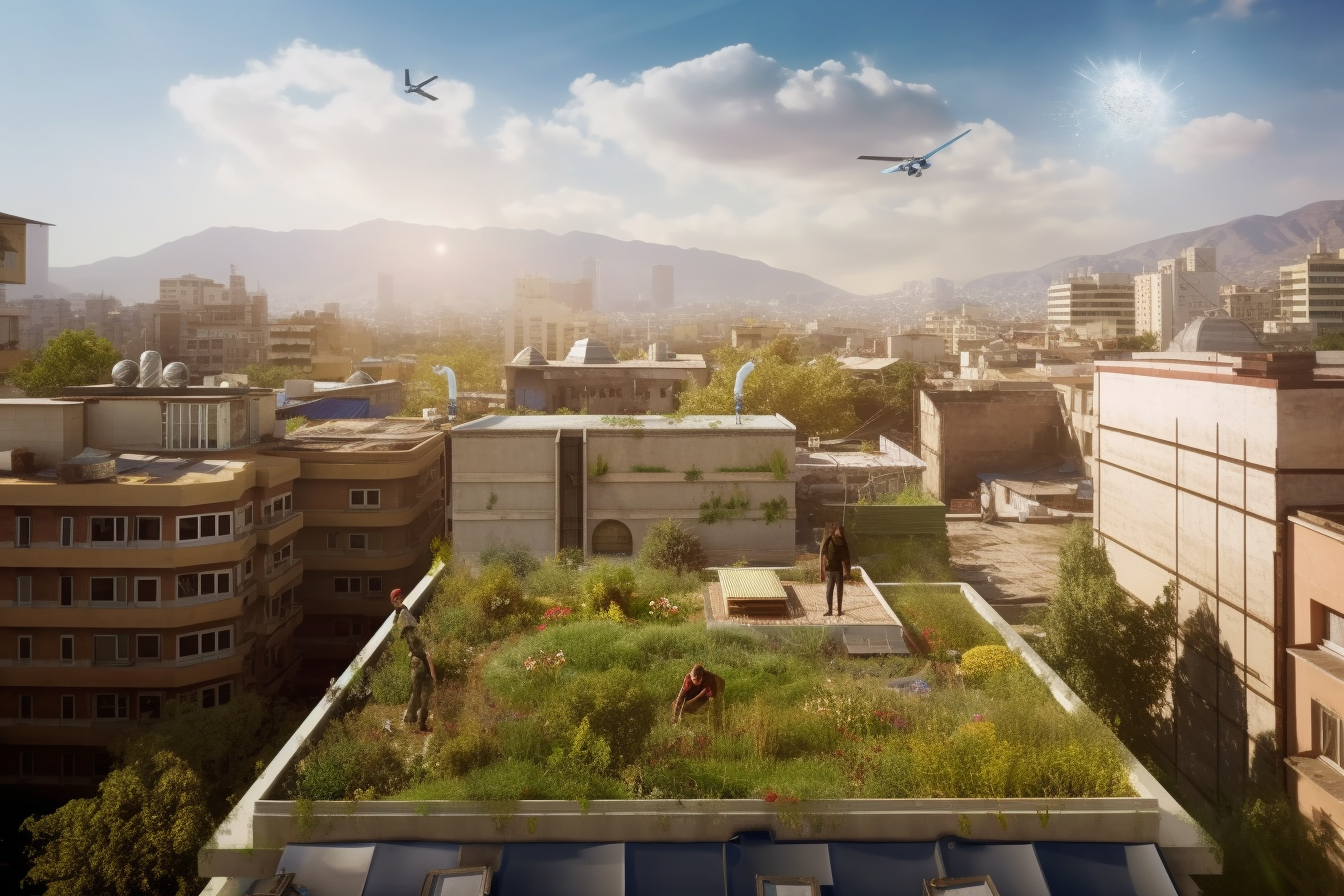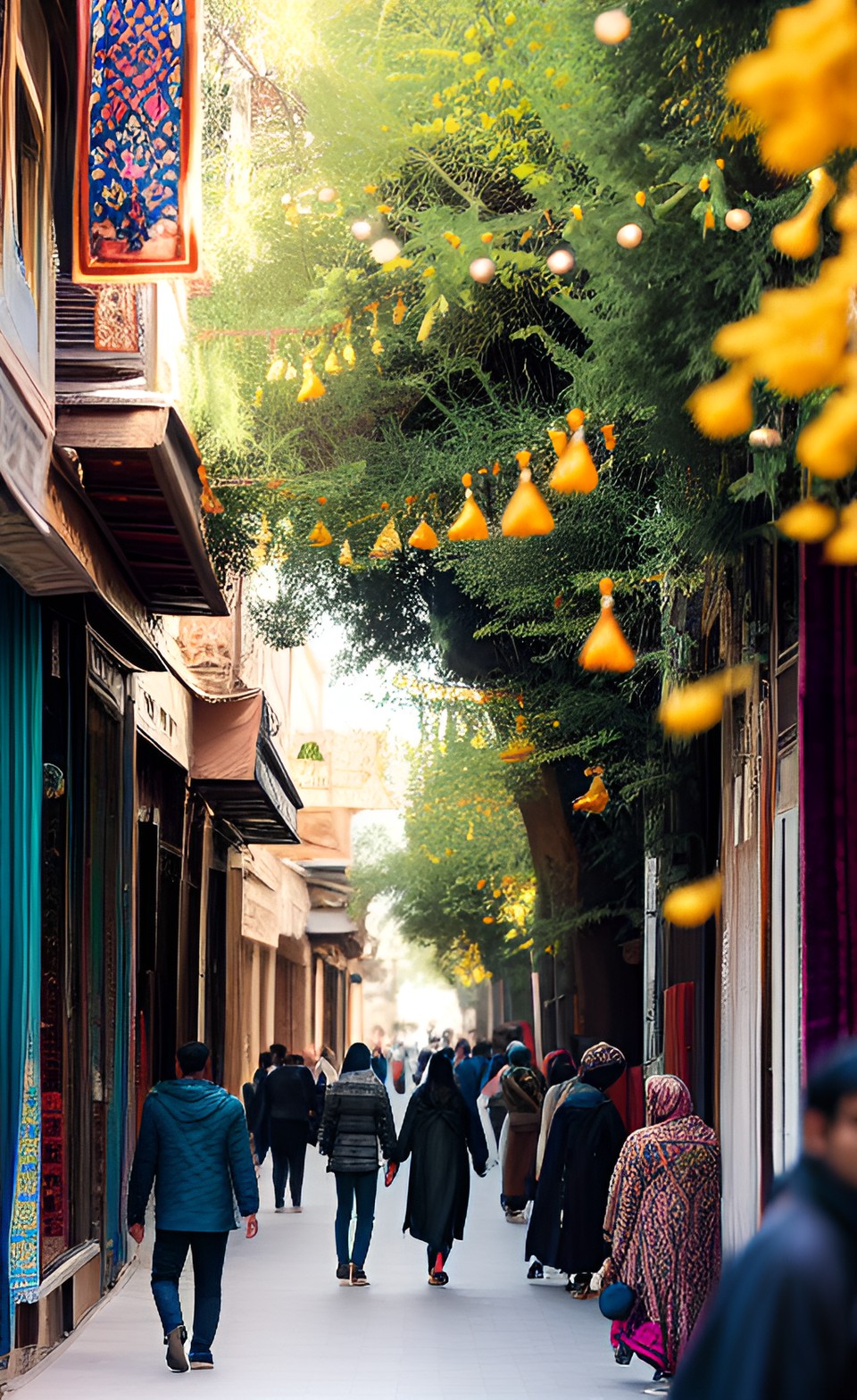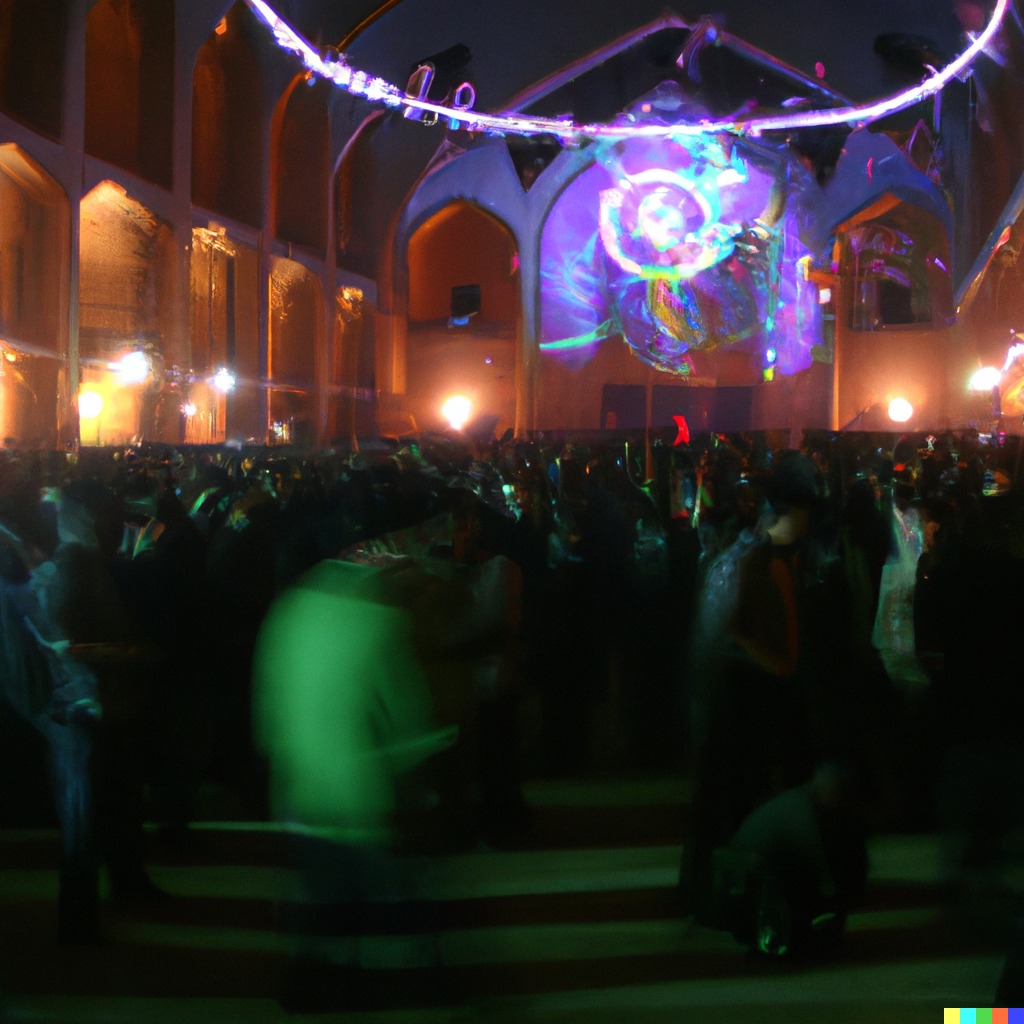This post is part of the Persianate Futurism series, a collection of works which asks: What will the Persianate world look like 30 years in the future? It invites writers, artists, and readers to draw inspiration from the region’s unique collective past to imagine and construct novel future societies, economies, and cultures. See the full collection here.
***
I’ll never forget the first time I pulled into Samarqand’s central train station on the high speed direct line from Tehran. Having watched from my window as the rocky mountains of Khorasan, the vast sand dunes of the Karakum Desert, and the mighty Amu Darya River whizzed by, we at last reached the fertile plains of the Zarafshan river valley in time for sunset. Samarqand’s turquoise domes shone in the distance. The sights were exhilarating, but even more so the concept: a road that had been completely blocked by borders and walls was now a simple voyage by train. All you had to do was show up and buy the ticket, and by evening you were there.
Those first days in Samarqand back in 2035, I tried out my Persian on every corner, getting used to the local rhythm of our shared tongue. The shopkeepers laughed at first, not used to hearing a Tehran accent, but we’d mix and match words and pronunciation to communicate. Where words failed me, I would try out my Torki. A few years before the train line opened, Iran had instituted mother tongue education. Schools offered instruction in local languages in addition to Persian, and new institutes allowed people to study any language from across the country.
I took some Azeri classes and then Turkmen, hopeful that one day we’d view the rivers and mountains at the country’s edges as bridges, not barriers. In Samarqand, they appreciated my dedication, and between Persian, Uzbek, Azeri, and Turkmen, we created a mixed dialect. In the years to come, as Iranians and Afghans became a common presence on Samarqand’s streets, our pidgin became a new creole language, a modern version of the Sart dialect that once bridged Central Asian Persian and Turkic.
The innumerable friendships I made in Samarqand would mean everything to me in the years that followed that first train trip. Samarqand became a home to migrants, refugees, and intellectuals from all over the region; sitting in its cafes, smoking ghelyoon on takht under the old sycamore trees, we learned from the experiences of comrades and returned home to Iran armed with ideas and strategies for the challenges facing us.
As I get older, it becomes harder to remember how things were back in the 2020s and 30s – the repression we faced, the challenges we overcame, how exciting the new world we built was. The new generations live in a world so dramatically different that they can’t even imagine the old days. I write this letter so that after I’m gone, future generations will remember how we forged the path that they are on – and to remind them of the need for solidarity and vigilance in the future.
The truth is, it’s nearly impossible to predict what will happen or how things will turn out. The past is our best reminder of this. In the dark days after the 2021-23 feminist protests in Iran and Afghanistan were crushed, no one could have foreseen that Khamenei’s death in 2029 would lead to different factions of the Revolutionary Guards jockeying for power, some backed by Russia, others by China, and a few by Israel and Saudi Arabia.
Fewer could have imagined that the violence would come to an end through the popular protests and popular strikes that followed – millions marching in every city, town, and village demanding an end to military rule, the establishment of a government of national reconciliation and the return of exiles.

They came one by one, as if testing out the waters. First, ordinary people – the non-political ones. People who’d grown up without ever seeing Iran. Then, members of the Tudeh Party, of the National Front, and finally Mohamed Reza Pahlavi and Maryam Rajavi. It was fun watching them have to try and earn the people’s trust. Especially the self-proclaimed Shah of Iran, who after a lifetime of acting like ruling the country was his birthright had to form a new understanding of a place he knew so little about.
All of a sudden, a million ideas and beliefs appeared at every corner, as if sprouting from the ground. Iranians from every part of the country and of the world shared ideas freely, for the first time. Activists passed out flyers, student groups held dance parties in the streets to rally support, and the mosques filled with youth leagues demanding an Islamic ethics of radical tenderness, love, and fair distribution of wealth as the basis of the new order. Those days were the most beautiful I ever lived.
At the 2031 May Day march, I woke up early to attend the memorial at Khavaran cemetery for the martyrs of past repressions. I cried hard at the speeches by Parastou Forouhar in honor of her parents and those of Neda Agha Soltan’s mother and father. One woman spoke who had lost one of her children under the Shah and another one a few years later under the new regime; it was hard not to remember my own family, my dad’s cousins exiled in the 1970s and those executed in the 80s.
The tears were followed by chants. Members of the Afghan, Kurdish, and Balochi feminist movements of the 2020s led the way. We took the solar tram downtown and marched to Azadi Square. And finally, after years, it lived up to its name: Freedom. Everyone was there: the workers’ unions, the syndicates, the anarchists, the Trotskyists, the environmentalists, the Assyrian and Armenian leftist fronts, the queer and trans contingents, the Shia Equality Brigades, the radical feminists, the Islamo-Marxists, the Baha’i Liberation League, and many more, reminding us all that they had been there, beneath the surface for decades. There was something especially beautiful about watching Hossein Amanat chanting with us under the tower he designed so long ago.
Back then, in the moments of joy and solidarity, we could hardly envision the challenges to come. The street fighting, the assassinations, the people killed by leaders determined to hold on to power. When Pahlavi and Rajavi tried to hijack the people’s government in 2033 in the name of “saving” Iranians from foreign immigrants who would “dilute” our “national culture,” we spread out across the country in teams, going door-to-door to explain how open borders could help us share resources more efficiently, without all the unnecessary waste that comes from walls, border regimes, and immigration bans. Amid the growing environmental crises, people understood that the only way to survive this increasingly challenging and overheated world was to work with our neighbors. Through community consultations and conversations, we defeated what could have been a xenophobic backlash and instead propelled forward the end of borders and the rise of a transnational environmentalist movement.
If there was one thing we came to understand, it’s that democracy is a process, not an event; it must be nourished and developed. It was in late night debates and public town halls that it progressed, one sentence at a time – in the kucheh, at the communes we set up in the mahalleh, and the weekly congresses we’d have across each district.
 Seeing my neighbors come together to fight for our shared future, for all of us living in Iran – Afghans, Iraqis, South Asians, Central Asians, Caucasians, Iranians of many stripes – I felt again the hope I had experienced pulsing through my veins back during the 2009 protests. Dar bahar-e azadi, jaye shohada khali. In the spring of freedom, the places of the martyrs of the past were empty. They would be proud to know the path we’d come.
Seeing my neighbors come together to fight for our shared future, for all of us living in Iran – Afghans, Iraqis, South Asians, Central Asians, Caucasians, Iranians of many stripes – I felt again the hope I had experienced pulsing through my veins back during the 2009 protests. Dar bahar-e azadi, jaye shohada khali. In the spring of freedom, the places of the martyrs of the past were empty. They would be proud to know the path we’d come.
Those years were a time of great change. And not just for us. There was nothing more inspiring than seeing the Palestinian revolt of 2034, the rapid rise of the global boycott movement, and the ensuing collapse of Israeli apartheid and the birth of a single democratic state between the river and the sea. Or the mass protests in Saudi Arabia after Muhammad Bin Salman was assassinated and people demanded democratic rule. One by one, like dominoes, dictators succumbed to people power. Seeing victories elsewhere, we learned strategies and tried them out here, and vice versa. Those of us who could speak with our neighbors in Arabic, Urdu, Kurdish, or Torki could translate what was happening, getting around media channels and their agendas dictated by states and billionaires. People shared their hopes and dreams across borders, joining hands to finally build the revolutionary future we’d dreamed of.
The best part was seeing the borders fall down, one by one. There’s something beautiful about being able to watch the world go by without any military checkpoints or uniforms to mar it. To be able to cross from Iran Zamin to Mavara Olnahr, feeling almost like you’d traveled to Mavara-ye Tabiat. But this was even better. Because it was our own world, transformed into something else. Something more equal, more free. Better.
When I go up to my building’s rooftop in the evenings, the kids who help me tend the communal garden ask me about the “old times,” when the sky was gray with pollution for days on end and men used God to attack each other. They almost can’t believe my stories. But how could they? They grew up in a world where every house has a wind-o-meter and solar panels to keep the electric flow. And there’s always a couple of mullahs in the yearly Tehran pride parade with signs like “Free Hugs” and “If you’re lonely, I will be your family.” The idea of religion as something oppressive seems kind of ridiculous to them. When we pick vegetables, we sing the old revolutionary anthems from 1979 and 2009 and 2022. Even if things have changed, they need to know them – you never know when they’ll come in handy again.
These days I take the train to Samarqand all the time. Since 2042, when Tehran introduced a program to build all new construction out of mudbrick, those of us who lobbied for the change travel across the region preaching the gospel of sustainable modern buildings based in architectures and materials of the past. Some come to study at Kashan’s Magical Mudbrick University, and others visit Sistan on fieldtrips. The pictures of Tehran’s homes with wind towers peeking out from atop hanging rooftop gardens, nourished by gray water recycled from the glacial streams that crawl downhill in the city’s joop canals, have convinced many across the continent to consider our approach. Even as the Earth gets hotter, it feels like Tehran has gotten cooler.
I have to get going. Tonight there’s a big party at the Imamzadeh Saleh up in Tajrish. We’re celebrating the 10th year of the rooftop harvests, bringing the extras over to the collective kitchen at the shrine to be baked into a massive meal to be served in the square outside. It’s a dream come true to be able to not only grow our own produce but also to share it with others. At first, when Food Not Bombs Tehran planned the collective kitchens across the city, they weren’t sure where to put them. But the shuttered Basiji offices in each shrine felt like the perfect place, drawing inspiration from nazri distribution to end urban hunger and bring neighbors together. When the new head of the Islamic Endowments Ministry heard the idea, he couldn’t think of a better use; former Basijis turned up in droves, volunteering in the kitchens and preparing and serving food alongside the anarchists who ran them.
Tonight, I’ll take the solar tram down Forough Farrokhzad Avenue and across Navid Afkari Boulevard, past Mahsa Amini Boulevard and then the long way up Mossadegh Street to Jerusalem Square. The pedestrian plaza that connects to Tajrish is the best place for people watching: the street musicians, the sidewalk vendors, and the big feminist punk market that has taken over the north side, where the old taxi station used to be. Now that solar trams connect the whole city, far less space is devoted to cars and parking, and pedestrians have taken over every corner of Tehran.

Some people say it’s chaotic. But I love the chaos. The kids playing hopscotch and soccer and bicycling between the stalls. The performers holding up snakes and snake oils, the musicians playing violins and setar or dancers breakdancing to Arabic, Bollywood, or Film Farsi beats. The tourists from places like Indonesia and Kashmir and Mexico and Palestine sipping aragh sagi cocktails and puffing on ghelyoon as they take it all in from the second-story bars.
I remember back when people used to believe that technology would free us, that the future would be a bunch of screens and touchpads and remote conferencing and artificially created food on a planet that had grown too hot to survive on. When we couldn’t imagine a better world so we thought we had to make up a new one. I’m glad for the technology we’ve learned to use: the solar trams, the wind farms, the adhesives to make the mudbrick stick together better and cool its surfaces, the machines that let us purify gray and salt water and drink it straight away. But at the end of the day, we saved ourselves. We realized that this world was greater than any one of us. That desire for power among any of us would lead to the downfall of all of us.
Once we let go of that and started thinking collectively and creatively – looking back to the past for solutions to the future, moving beyond our hubris as humans to think we needed to invent everything all over again and instead learning from the millenia of experience before us – that’s when we finally started to thrive. That’s when we could at last see other people as fully human, and not as subjects to impose beliefs and control over. When we could finally see each other as many parts of a single body, for whom the pain of one represented pain for all – and the victory of one represented victory for all.
It took us a while, that’s for sure. But sitting here in 2053, looking at how hard we’ve struggled but how far we’ve come, it’s obvious that the change of mindset was worth it. This year at Nowruz we’ll finally have our own home-grown dill to make the herbed rice with. And I’ve never been happier.















